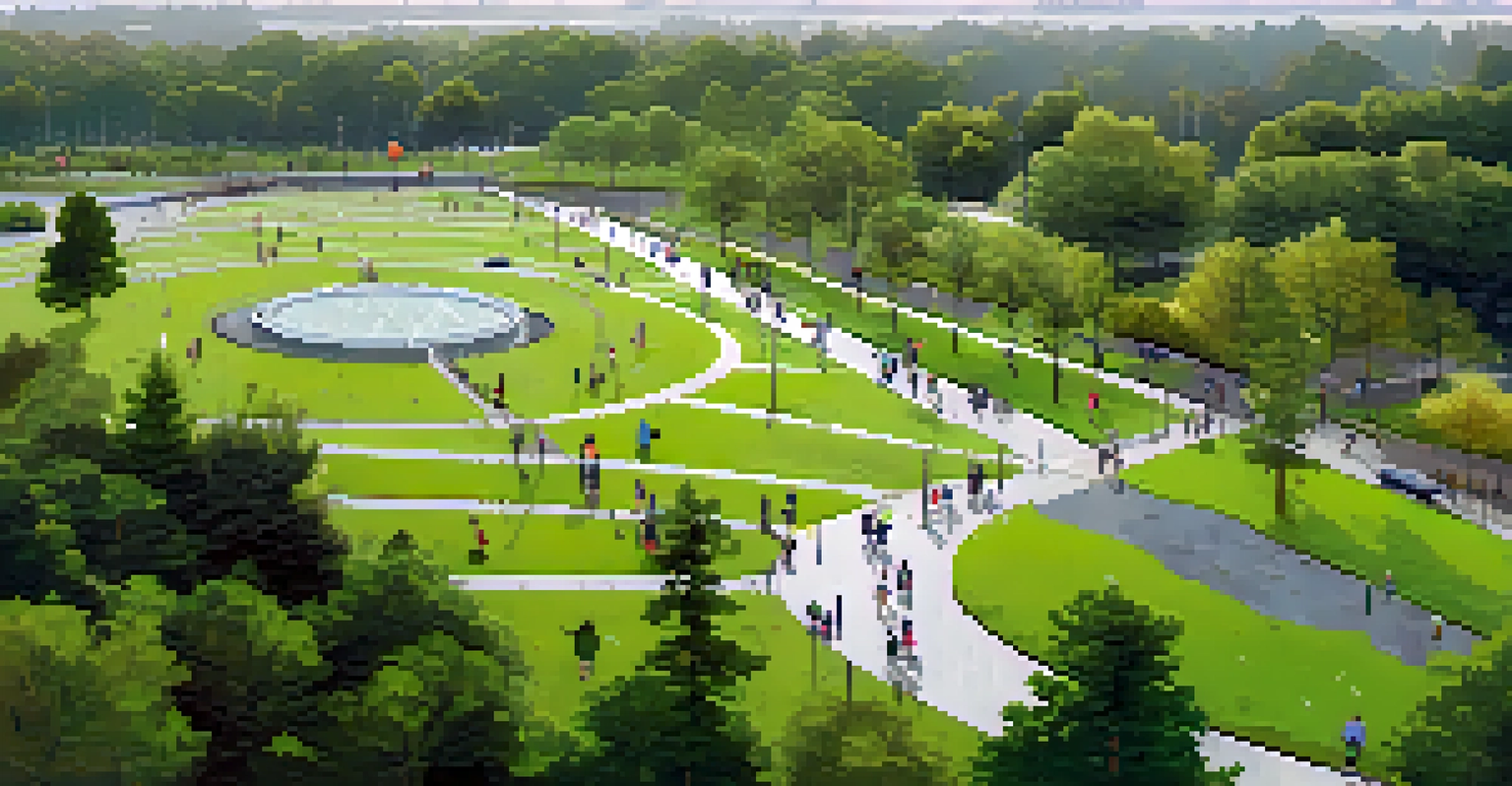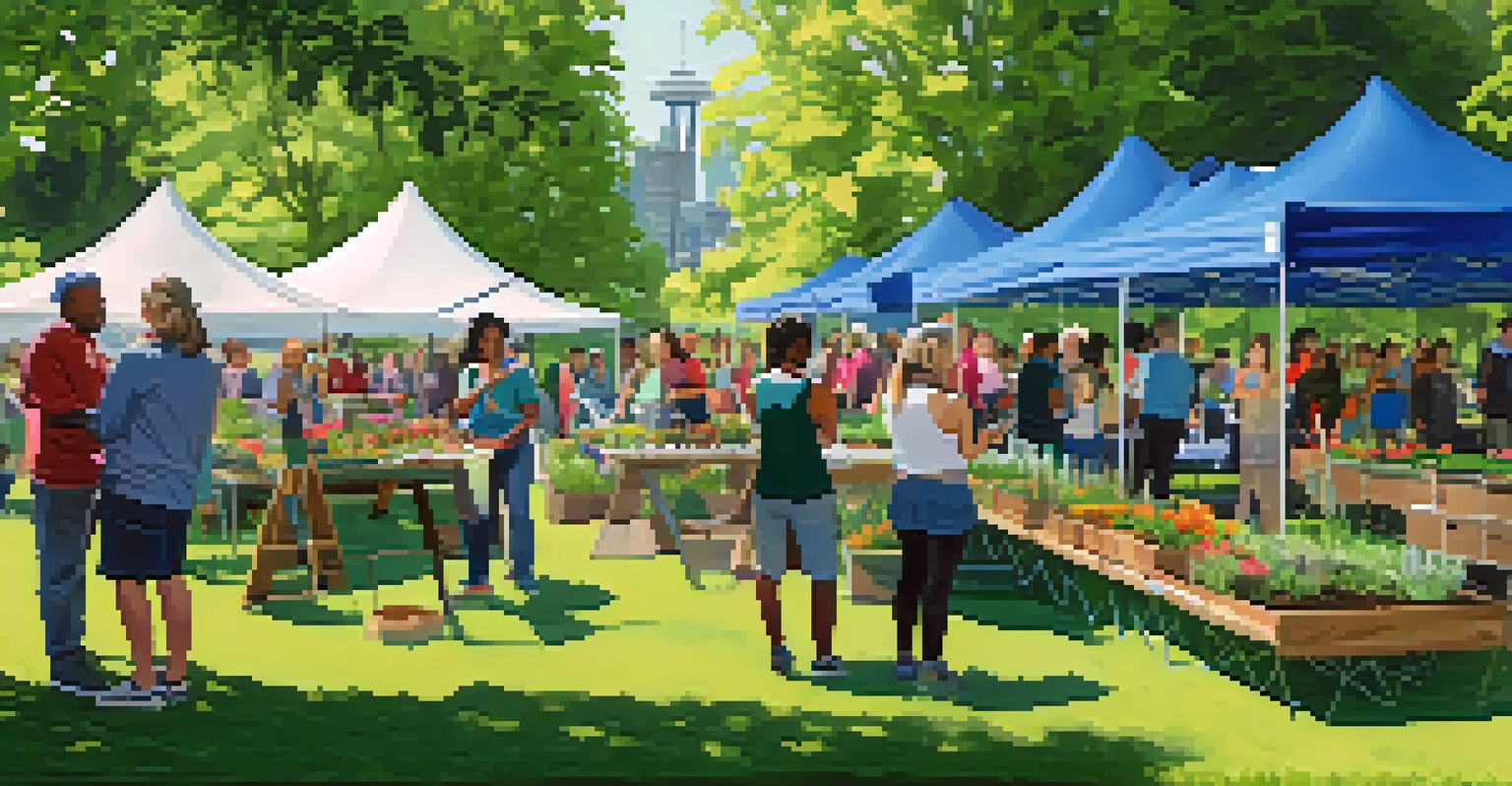The Role of Urban Parks in Seattle's Sustainability Efforts

Introduction to Seattle's Urban Parks and Sustainability
Seattle's urban parks play a pivotal role in the city's sustainability efforts, acting as green lungs for a bustling metropolis. These parks not only provide recreational spaces but also contribute to environmental health, promoting biodiversity and reducing urban heat. As residents seek more green spaces, Seattle has recognized the importance of integrating nature into urban planning.
In every walk with nature one receives far more than he seeks.
With a backdrop of stunning landscapes, Seattle's parks enhance the quality of life for its citizens while addressing pressing environmental challenges. They serve as essential habitats for wildlife, help manage stormwater runoff, and improve air quality. Through these efforts, the city demonstrates a commitment to creating a sustainable urban environment.
In this article, we’ll delve into the various ways Seattle’s urban parks are contributing to sustainability. From enhancing biodiversity to fostering community engagement, these green spaces are more than just pretty places; they’re essential to Seattle's future.
Biodiversity and Habitat Preservation in Urban Parks
Urban parks in Seattle serve as vital habitats for various plants and animals, contributing significantly to the city’s biodiversity. By preserving these natural spaces, Seattle not only protects local flora and fauna but also provides educational opportunities for residents and visitors alike. For instance, parks like Discovery Park are home to numerous bird species, making them hotspots for birdwatching enthusiasts.

These green spaces also encourage the growth of native plant species, which play a crucial role in supporting local wildlife. By prioritizing natural landscaping and reducing the use of non-native plants, Seattle's parks help create an ecosystem that thrives. This biodiversity is essential for maintaining ecological balance and resilience against climate change.
Urban Parks Enhance Biodiversity
Seattle's urban parks serve as essential habitats that support local wildlife and promote biodiversity, contributing significantly to the city’s ecological health.
Additionally, urban parks act as corridors for wildlife, connecting fragmented habitats and allowing species to thrive. This interconnectedness enhances the overall environmental health of the region, making urban parks indispensable for Seattle’s sustainability strategy.
Stormwater Management Through Green Infrastructure
One of the most practical benefits of urban parks is their ability to manage stormwater effectively. Seattle, known for its rainy climate, faces challenges with runoff and water quality; parks with permeable surfaces and bioswales help mitigate these issues. By allowing rainwater to seep into the ground, these green spaces reduce the strain on the city’s drainage systems.
The environment is where we all meet; where we all have a mutual interest; it is the one thing all of us share.
For example, parks like Magnuson Park incorporate natural elements that absorb excess rainwater, preventing flooding and protecting local waterways from pollution. This approach not only safeguards the environment but also enhances the resilience of the city against extreme weather events. It’s a perfect illustration of how nature-based solutions can tackle urban challenges.
Moreover, the integration of green infrastructure in parks promotes groundwater recharge, which is vital for maintaining water levels in aquifers. By investing in such sustainable practices, Seattle showcases a forward-thinking approach to urban planning and climate adaptation.
Air Quality Improvement and Urban Parks
Urban parks are instrumental in improving air quality in Seattle, acting as natural filters that absorb pollutants. Trees and vegetation in these parks play a critical role by capturing carbon dioxide and releasing oxygen, contributing to a healthier atmosphere. This is particularly important in a city where traffic and industrial activities can lead to elevated pollution levels.
Studies have shown that green spaces can significantly reduce urban heat islands—a phenomenon where city areas become significantly warmer than their rural surroundings. By providing shade and cooling effects, Seattle's parks help lower temperatures, enhancing overall air quality. This not only benefits the environment but also promotes better health for residents.
Parks Improve Air Quality
The trees and vegetation in Seattle's parks act as natural filters, capturing pollutants and helping to reduce urban heat, which enhances the overall air quality.
Furthermore, parks offer a respite from the hustle and bustle of city life, encouraging people to spend more time outdoors. This connection to nature fosters a greater appreciation for the environment, motivating citizens to advocate for cleaner air and sustainable practices in their daily lives.
Community Engagement and Education in Urban Parks
Seattle’s urban parks are not just green spaces; they are community hubs that foster engagement and education. Through various programs and events, parks host workshops on sustainability, gardening, and environmental stewardship, empowering residents to take an active role in caring for their environment. This community involvement is crucial for fostering a culture of sustainability within the city.
Additionally, parks provide a platform for local organizations and schools to collaborate on environmental projects. These initiatives not only enhance the ecological health of the parks but also inspire future generations to appreciate and protect their natural surroundings. It’s about creating a shared responsibility for the environment.
Moreover, the social aspect of parks encourages community bonding, bringing people together from diverse backgrounds. This sense of community can lead to collective action towards sustainability, as residents work together to advocate for green policies and practices in Seattle.
The Economic Benefits of Urban Parks for Sustainability
Investing in urban parks yields significant economic benefits for Seattle, supporting both local businesses and tourism. Well-maintained parks attract visitors, which in turn boosts nearby shops and restaurants. For instance, parks like Waterfront Park have become popular destinations, drawing crowds and fostering economic activity in the area.
Additionally, urban parks increase property values in their vicinity, creating financial incentives for homeowners and businesses alike. By enhancing the aesthetic appeal and livability of neighborhoods, parks contribute to a vibrant community that is attractive to potential residents and investors. This is a win-win for the city’s economy and its sustainability goals.
Community Engagement Drives Sustainability
Through educational programs and events, Seattle's parks foster community involvement and collective action towards environmental stewardship and sustainability.
Furthermore, parks serve as venues for community events and festivals, generating revenue and promoting local culture. By supporting these activities, Seattle demonstrates how green spaces can be leveraged for economic growth while simultaneously advancing environmental sustainability.
Challenges and Future Directions for Seattle's Urban Parks
Despite their many benefits, Seattle's urban parks face challenges that could hinder their effectiveness in sustainability efforts. Issues such as budget constraints, maintenance needs, and climate change impacts pose significant obstacles. To address these challenges, community involvement and innovative funding solutions are crucial.
For instance, partnerships with local businesses and non-profits can help secure resources for park maintenance and improvement. Engaging volunteers for clean-up days or planting events can also foster a sense of ownership and responsibility among residents. By working together, the community can ensure that these green spaces remain vibrant and sustainable.

Looking ahead, Seattle must continue to prioritize the integration of green infrastructure and sustainable practices in park planning. This includes expanding green spaces, enhancing biodiversity, and promoting education initiatives. By embracing these future directions, Seattle can strengthen its commitment to sustainability through its urban parks.